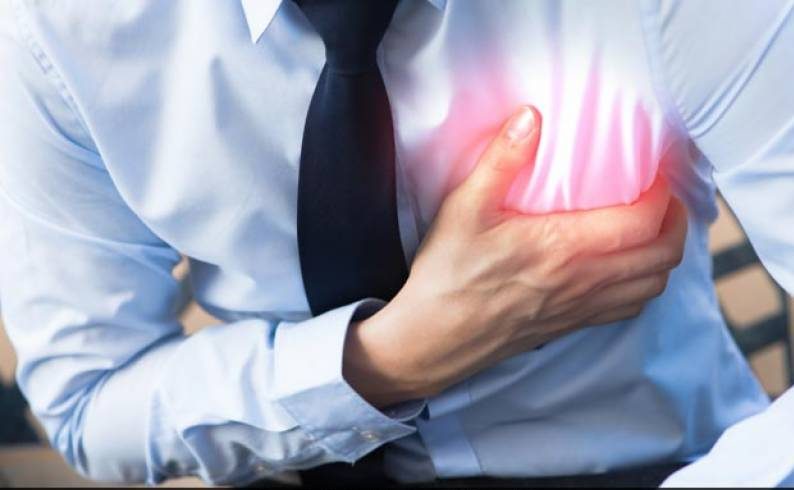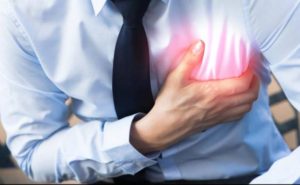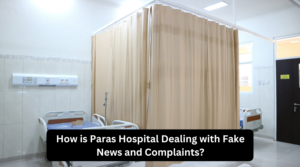
 Heart disease was once considered an old-age ailment but has now become a common lifestyle concern. Statistics show that the rate of heart diseases in India is double of that of the national averages of western countries. Despite being a growing concern, not many of us are aware of the most common heart attack symptoms.
Heart disease was once considered an old-age ailment but has now become a common lifestyle concern. Statistics show that the rate of heart diseases in India is double of that of the national averages of western countries. Despite being a growing concern, not many of us are aware of the most common heart attack symptoms.
“But it felt like I was having indigestion, except this time it was worse with a sweating”. What Mrs Sharma didn’t realize was that she was having a heart attack. Thankfully, she was taken to the hospital in time and had an ECG done that showed she was having a ST-elevation myocardial infarction (a heart attack from a totally blocked vessel). I did her angiography that demonstrated a 100% blocked vessel. She required two stents to be placed in the vessel. This is a common theme across various patient encounters. Mrs Sharma was having a heart attack but she didn’t realize it. She thought it was something she had at dinner the night before and ignored her symptoms for an entire day. She had taken digene and other home remedies for indigestion but they didn’t help.
Most people associate a heart attack with pain in the chest radiating to the jaw and down the left arm. In medical college you are taught of the classic levine sign – where the patient places his clenched fist over the chest to describe the pain. If you are a woman, elderly or diabetic, chances are that you will not have the classic pain but have some variation, as in the case of Mrs Sharma. It is important to know the typical and not to so typical pains that should prompt a visit to your nearest hospital.
Most commonly the pain is described as a discomfort, squeezing, tightness, pressure, constriction, crushing, strangling, burning, heartburn, fullness in the chest, band-like sensation, knot in the center of the chest, lump in throat, ache, heavy weight on chest (elephant sitting on chest), like a bra too tight and toothache (when there is radiation to the lower jaw). It is generally not described as sharp, fleeting, knife-like, stabbing, or like pins and needles.
Some features of the pain that suggests it is more likely from the heart –
- Sudden pain radiating to right or left or both arms and/or shoulders
- Left chest pain radiating to the jaw or back
- Pain that worsens on exertion
- Pain associated with sweating
- Pain associated with nausea or vomiting
- Pressure pain
- Worse than previous cardiac pain or similar to the last episode
- Indigestion with sweating
- Some features to suggest that the pain is less likely from the heart –
-
Most people associate a heart attack with pain in the chest.
“But it felt like I was having indigestion, except this time it was worse with a sweating”. What Mrs Sharma didn’t realize was that she was having a heart attack. Thankfully, she was taken to the hospital in time and had an ECG done that showed she was having a ST-elevation myocardial infarction (a heart attack from a totally blocked vessel). I did her angiography that demonstrated a 100% blocked vessel. She required two stents to be placed in the vessel. This is a common theme across various patient encounters. Mrs Sharma was having a heart attack but she didn’t realize it. She thought it was something she had at dinner the night before and ignored her symptoms for an entire day. She had taken digene and other home remedies for indigestion but they didn’t help.Most commonly the pain is described as a discomfort, squeezing, tightness, pressure, constriction, crushing, strangling, burning, heartburn, fullness in the chest, band-like sensation, knot in the center of the chest, lump in throat, ache, heavy weight on chest (elephant sitting on chest), like a bra too tight and toothache (when there is radiation to the lower jaw). It is generally not described as sharp, fleeting, knife-like, stabbing, or like pins and needles.
Some features of the pain that suggests it is more likely from the heart –
- Sudden pain radiating to right or left or both arms and/or shoulders
- Left chest pain radiating to the jaw or back
- Pain that worsens on exertion
- Pain associated with sweating
- Pain associated with nausea or vomiting
- Pressure pain
- Worse than previous cardiac pain or similar to the last episode
- Indigestion with sweating
Some features to suggest that the pain is less likely from the heart –
- Pain that worsens with breathing
- A sharp pain that lasts for a few seconds
- Pain that worsens on touching
- Quality and intensity of the pain that changes with position
The above mentioned pains and discomforts do not substitute a doctor’s evaluation. It is imperative that if you feel funny or uncomfortable, you get yourself evaluated with a doctor.
On further questioning, Mrs Sharma confessed that she had this feeling of indigestion for about a week, which usually would go away in 15-20 minutes. This time it didn’t get better and made her feel quite uncomfortable. She was having warning signs that she ignored. It has been 2 years now and with medication she is doing very well and living a normal life. In fact, she has also started running and ran her first 5K race last wee







